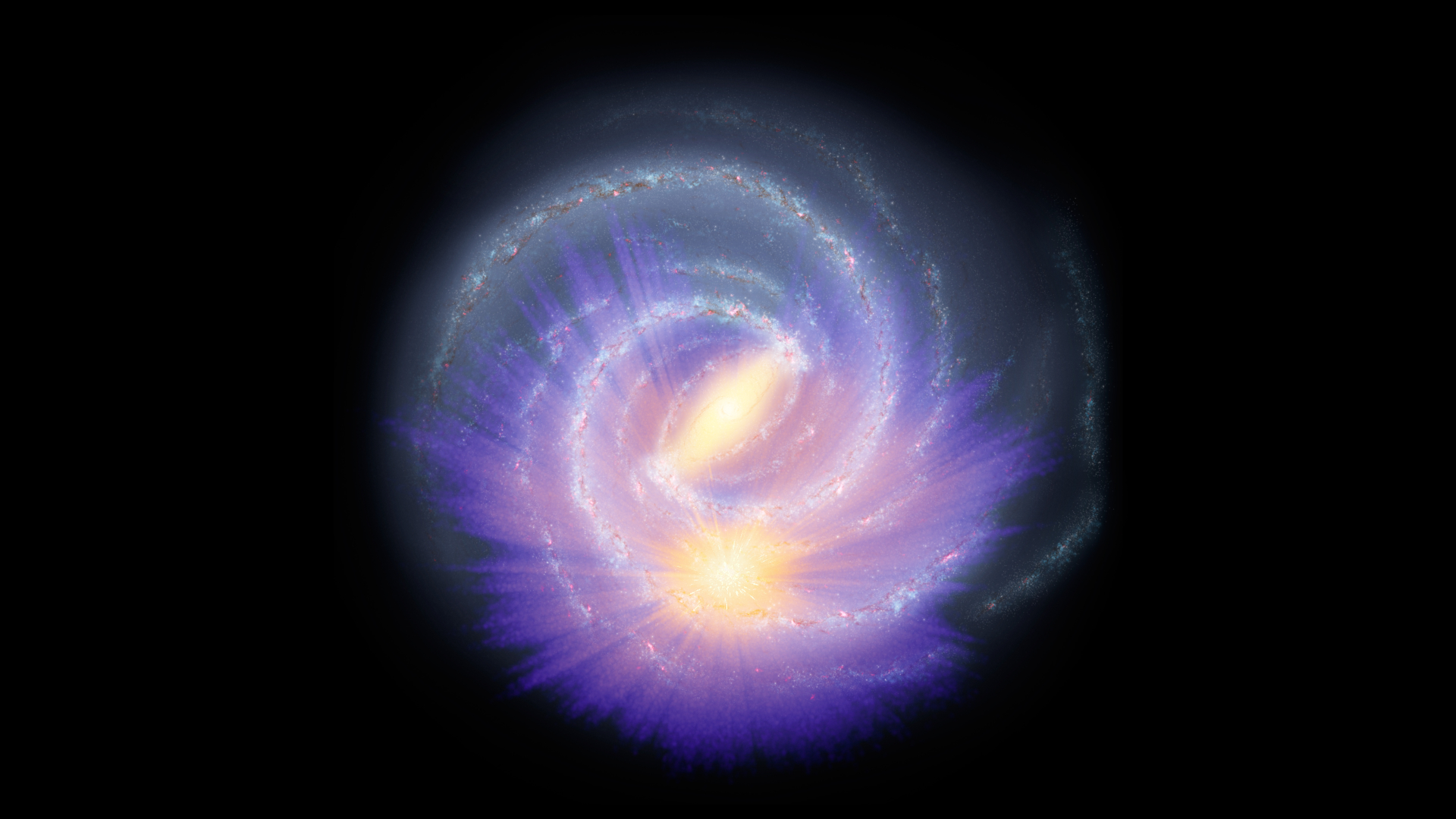If it were’t for an enormous halo of dark matter enveloping our galaxy, the spin-rate of our central bar should stay pretty constant. But researchers have recently inferred that it has slowed down by almost 25% since its formation, a clear sign of the presence of dark matter.
How do you measure the spin-rate of something that takes millions of years to make a single revolution?
The answer is chemistry. Stellar chemistry.
Stars near the center of the galaxy are much richer in “metals”, which is the word astronomers use to denote any element heavier than helium. Stars in the outskirts, however, are much more lacking in metals. Therefor, if you happen to come across a group of stars that is exceptionally rich in metals, then it most likely wandered away from the center of the galaxy.
That’s the case for the Hercules stream, a large group of stars observed with the Gaia satellite. The Hercules stream is a metal-rich clump of stars, but sits relatively far from the galactic center. There’s something else intriguing about the Hercules steam: it’s locked in a gravitational dance with the central bar of the Milky Way.
Much like the Trojan asteroids of the solar system lead and follow Jupiter in its orbit around the sun, the Hercules steam is captures by a unique combination of gravitational forces. As the central bar sweeps around, so does the Hercules stream.
So the Hercules stream follows the motion of the central bar, and the stars of the Hercules stream have migrated outwards to their present position over the past few billion years.
The only way for the Hercules stream to move outwards is for the central bar to be slowing down. As the spin-rate of the bar drops, the Hercules stream has to move outwards to match the period.
Putting it all together, a team of astronomers estimates that the spin-rate of the bar has dropped by 24% since the formation of the Milky Way, as published in a new study.
Co-author Dr Ralph Schoenrich (UCL Mullard Space Science Laboratory) said: “Astrophysicists have long suspected that the spinning bar at the centre of our galaxy is slowing down, but we have found the first evidence of this happening.
“The counterweight slowing this spin must be dark matter. Until now, we have only been able to infer dark matter by mapping the gravitational potential of galaxies and subtracting the contribution from visible matter.
“Our research provides a new type of measurement of dark matter – not of its gravitational energy, but of its inertial mass (the dynamical response), which slows the bar’s spin.”
Co-author and PhD student Rimpei Chiba, of the University of Oxford, said: “Our finding offers a fascinating perspective for constraining the nature of dark matter, as different models will change this inertial pull on the galactic bar.
“Our finding also poses a major problem for alternative gravity theories – as they lack dark matter in the halo, they predict no, or significantly too little slowing of the bar.”


The fact many scientists are eluded by any particle resembling dark matter (and MOND and other theories have their gaps and irregularities in explaining everything and being compatible with the Standard Model), it makes me ponder whether it could indeed be either.
1. black holes – lots of small ones that elude our detection
2. Supermassive black holes and some quality that has eluded even brilliant scientists like Hawking, Susskind and others.
3. A property of spacetime itself, ala Dynamic Equilibrium (ie. Einstien and Lemaitre independent posited this theory with minor variations but Eistein Desk-Drawered the idea)
4. A property of either quantum vacuum or the vacuum surrounding the Universe (which would likely only be falsifiable through theory or local inferences)…